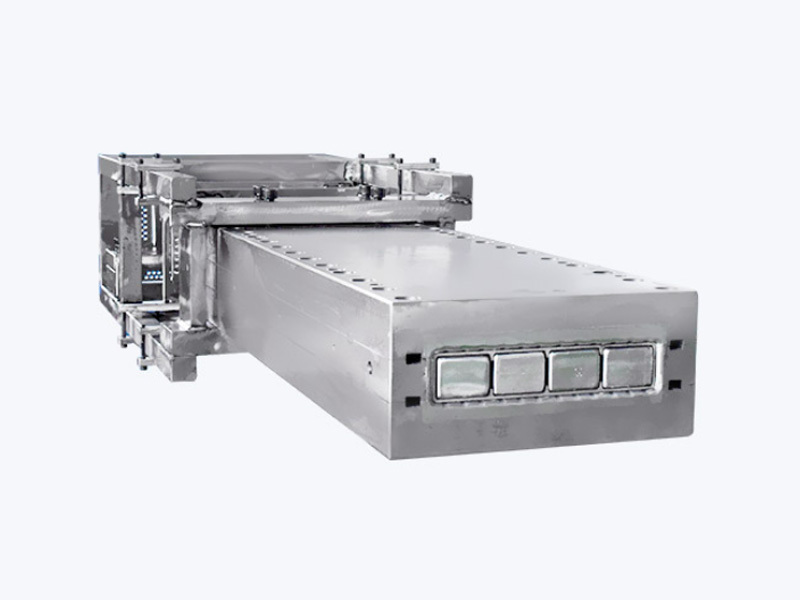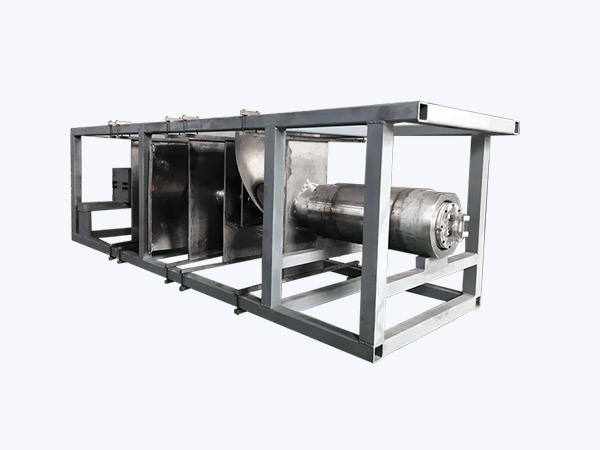Fast delivery
Global supplier
Innovative solutions
Exploring the Benefits of FRP Structural Profiles in Modern Architecture
Jul 01,2025
Exploring the Benefits of FRP Structural Profiles in Modern Architecture
Table of Contents
- 1. Introduction to FRP Structural Profiles
- 2. What is Fiber Reinforced Polymer (FRP)?
- 3. Benefits of FRP Structural Profiles
- 3.1 Weight Savings
- 3.2 Corrosion Resistance
- 3.3 Design Flexibility
- 3.4 Sustainability
- 3.5 Cost-Effectiveness
- 4. Applications of FRP in Modern Architecture
- 5. Case Studies of FRP Usage in Architecture
- 6. The Future of FRP in Construction
- 7. Frequently Asked Questions (FAQs)
- 8. Conclusion
1. Introduction to FRP Structural Profiles
As modern architecture continues to evolve, the materials used in construction are becoming increasingly innovative and sustainable. One such material making substantial waves in the industry is **Fiber Reinforced Polymer (FRP)**. This composite material is gaining traction due to its myriad benefits, which architects and builders are leveraging for **structural profiles**. In this article, we will explore the **benefits of FRP structural profiles** in modern architecture, their applications, and what the future holds for this revolutionary material.
2. What is Fiber Reinforced Polymer (FRP)?
Fiber Reinforced Polymer (FRP) is a composite material made from a polymer matrix reinforced with fibers. These fibers can be made from a variety of materials such as glass, carbon, or aramid. FRP has unique characteristics, combining the lightweight properties of plastics with the strength and stiffness of metals. This combination results in a material that is not only strong but also versatile, making it ideal for various architectural applications.
2.1 Composition of FRP
The composition of FRP significantly contributes to its performance. The polymer matrix provides a protective layer, while the fibers enhance strength, stiffness, and resistance to environmental factors. Together, these elements create a durable product that meets the specific demands of modern architecture.
3. Benefits of FRP Structural Profiles
FRP structural profiles offer numerous advantages that make them a favored choice in modern architecture. Below are some of the most noteworthy benefits:
3.1 Weight Savings
One of the most significant benefits of FRP structural profiles is their **lightweight nature**. Compared to traditional materials such as steel and concrete, FRP is much lighter, reducing the overall load on a building's foundation. This weight-saving feature allows for more freedom in design and can also lead to substantial savings in transportation and installation costs.
3.2 Corrosion Resistance
FRP materials are inherently resistant to corrosion and chemical degradation. This property makes them ideal for use in harsh environments, such as coastal areas or industrial sites, where traditional materials may deteriorate over time. By choosing FRP, architects and builders can ensure the longevity and durability of their structures.
3.3 Design Flexibility
FRP can be molded into various shapes and sizes, offering architects unparalleled **design flexibility**. This adaptability allows for the creation of complex geometries and unique architectural features that would be challenging to achieve with traditional materials. As a result, FRP opens up new possibilities for creative expression in architecture.
3.4 Sustainability
The use of FRP contributes to sustainable construction practices. Its lightweight nature means less energy is required for transportation and installation. Additionally, FRP can be manufactured using recycled materials, further enhancing its eco-friendly profile. As sustainability becomes a critical focus in architecture, FRP positions itself as a responsible choice.
3.5 Cost-Effectiveness
While the initial cost of FRP may be higher than that of traditional materials, the long-term savings can outweigh this expense. The durability and low maintenance needs of FRP lead to reduced lifecycle costs. Furthermore, the ease of installation can significantly cut labor costs, making FRP a cost-effective option in the long run.
4. Applications of FRP in Modern Architecture
The versatility of FRP allows it to be used in a variety of architectural applications. Some of the most common uses include:
4.1 Bridges
FRP is increasingly being used in bridge construction due to its lightweight and corrosion-resistant properties. These profiles can support significant loads while minimizing the stress on supporting structures.
4.2 Building Facades
Architects are using FRP for building facades to achieve aesthetic designs while ensuring durability. The material can be designed to mimic the appearance of traditional materials, providing the desired look without compromising performance.
4.3 Structural Reinforcement
FRP is often used to reinforce existing structures, providing additional strength where needed. This allows for the retrofitting of older buildings without requiring complete demolition or reconstruction.
4.4 Flooring Systems
FRP flooring systems are lightweight, slip-resistant, and highly durable, making them suitable for commercial and industrial environments. Their resistance to chemicals and moisture also makes them ideal for environments where traditional flooring may fail.
5. Case Studies of FRP Usage in Architecture
To illustrate the effectiveness of FRP structural profiles in modern architecture, we will highlight several successful case studies.
5.1 The Golden Gate Bridge Reinforcement
In a recent renovation project of the Golden Gate Bridge, FRP was utilized to reinforce existing structures. The lightweight material enhanced the bridge's strength without adding significant weight, ensuring its longevity and resilience against environmental stresses.
5.2 The New York City Subway
FRP materials have been employed in the renovation of New York City's subway stations. Their resistance to moisture and corrosion has significantly improved the durability of structural components, leading to a safer and more reliable transportation system.
5.3 Commercial Building Applications
Numerous commercial buildings have adopted FRP for their facades and structural elements. By integrating FRP profiles, architects have created visually striking designs that also meet the practical demands of modern architecture.
6. The Future of FRP in Construction
As the demand for sustainable and efficient building materials continues to grow, the future of FRP in construction looks promising. New advancements in manufacturing techniques and material science are expected to enhance the properties of FRP, making it even more versatile and cost-effective. Furthermore, the architectural community is increasingly recognizing the potential of FRP, which will likely lead to wider adoption in future projects.
7. Frequently Asked Questions (FAQs)
7.1 What are the main advantages of using FRP in construction?
FRP offers lightweight properties, corrosion resistance, design flexibility, sustainability, and cost-effectiveness, making it an attractive choice for modern architectural projects.
7.2 Is FRP more expensive than traditional materials?
While the initial cost may be higher, the long-term savings in maintenance and lifecycle costs often make FRP a more economical choice.
7.3 How is FRP manufactured?
FRP is created by combining a polymer matrix with reinforcing fibers, which can be made from materials like glass, carbon, or aramid.
7.4 Can FRP be recycled?
Yes, some types of FRP can be manufactured using recycled materials, and ongoing research is focused on improving recycling processes for FRP products.
7.5 In what types of projects is FRP commonly used?
FRP is used in a variety of applications, including bridges, building facades, structural reinforcement, and flooring systems.
8. Conclusion
In conclusion, **Fiber Reinforced Polymer (FRP)** structural profiles offer a multitude of benefits that can transform modern architecture. From their lightweight nature and corrosion resistance to their design flexibility and sustainability, FRP is paving the way for innovative construction practices. As architects and builders continue to explore the potential of this composite material, we can expect to see a broader implementation of FRP in various architectural projects, shaping the future of the industry for years to come.
PREVIOUS:
Contact Us
Tel:
+86017717930013 +86013621742959
Email:
Address:
No.99 Denggao Road, Motou Town, Rugao City, Jiangsu Province, China.








